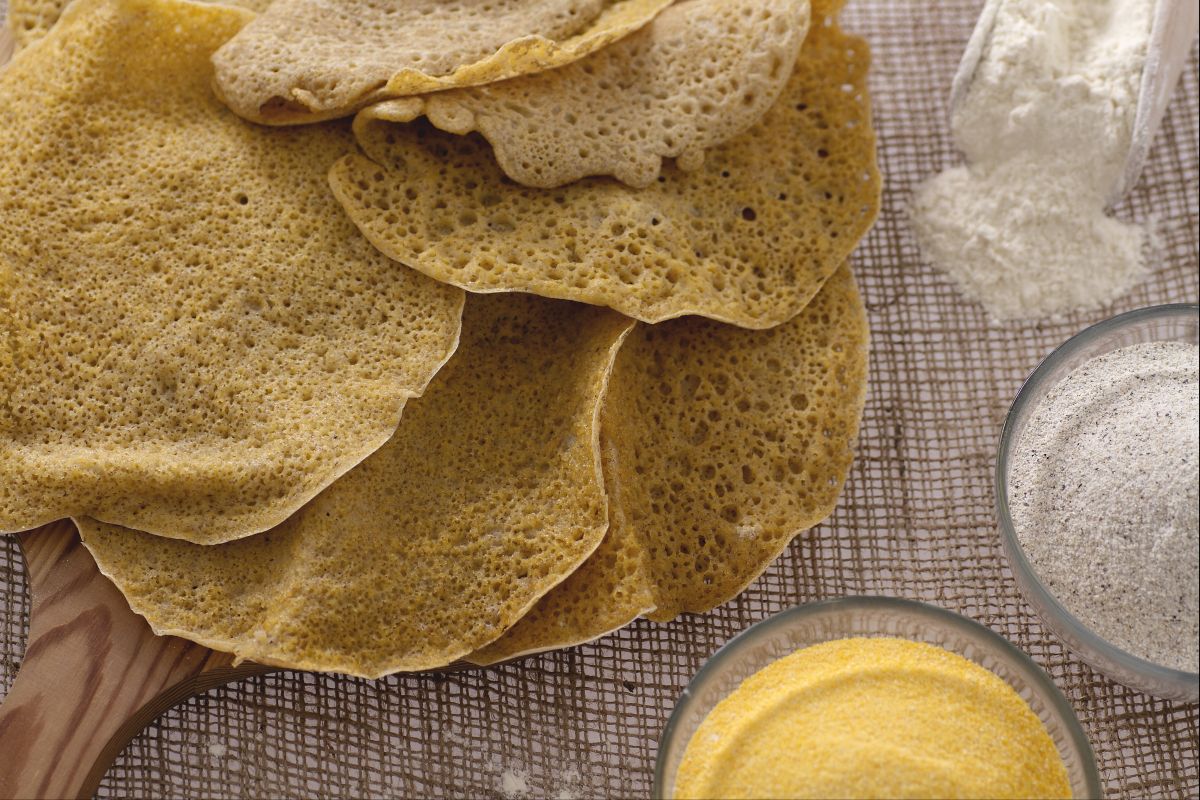Bread dough
- Difficult
- 1 h 15 min
- Kcal 434

Injera is a staple in Eritrean and Ethiopian cuisine. Honestly, it's a unique twist on traditional bread. Different. It's not your usual loaf. This fermented flatbread is primarily made from teff flour—a tiny grain native to Africa, giving injera its earthy flavor. Here's the thing: what sets injera apart is its preparation. Cooks use super hot stone plates to get that characteristic spongy and flexible texture. Seriously good. This tender bread is perfect for scooping up the spicy and rich stews like zighinì, a favorite in Eritrean kitchens.
And listen, the bread’s tangy flavor comes from a fermentation process, really distinguishing it from other flatbreads you might know. While some swap teff for other flours, the authentic taste of teff is, well, irreplaceable. Adds a special character to the dish.
Across Ethiopia and Eritrea, injera traditions vary. Pretty much. In some areas, the bread is moister and softer. In others, it gets crispier edges due to different cooking methods. But wherever you go, this Ethiopian flatbread serves as more than just food. Which is great. It doubles as a plate and utensil, with diners tearing pieces to pick up their meal. For sure.
Its versatility and fragrant pairings make it an essential part of any meal. You know, when you bite into teff bread, the slightly sour taste paired with savory stews quickly shows you why it holds such significance. Whether you’re making it at home or trying it at a restaurant, injera really captures the heart of "African food" in one bite. If you’re into traditional Ethiopian bread or exploring new flavors, injera offers a culinary adventure worth embarking on. Really, with its rich heritage and delicious taste, this bread is a true representation of Ethiopian and Eritrean traditions. Can't go wrong.
You might also like:

To prepare injera bread, whisk together in a large bowl the three flours: corn, all-purpose, and whole wheat 1. Dissolve the dry yeast in 1 cup (250 ml) of warm water 2 (alternatively, you can use 0.2 oz (6 g) of fresh yeast) and pour the liquid slowly over the flours 3.

Stir vigorously with a whisk 4 to obtain a thick, soft, and homogeneous batter 5, which you will cover with plastic wrap and allow to ferment for 2 days at room temperature 6.

After 2 days, you will have a bubbly mixture. At this point, add 2/3 cup (150 ml) of boiling water 7 and the baking soda 8. Mix with the whisk: the consistency should be smooth, similar to crepe batter 9.

Cover everything again with plastic wrap 10 and let it rest for another hour, after which the mixture will be swollen and full of bubbles 11. To cook the bread, you will need a round non-stick pan, similar to a crepe pan: heat it very well and pour about 2.5 oz (70 g) of batter on it 12.

As soon as bubbles begin to appear on the surface 13, cover with a lid and finish cooking 14: it will take about 2 minutes, you will notice that the cooking is done because the bread changes color 15. Once cooked, cover the bread very well with plastic wrap to prevent it from drying out. Injera bread is ready!